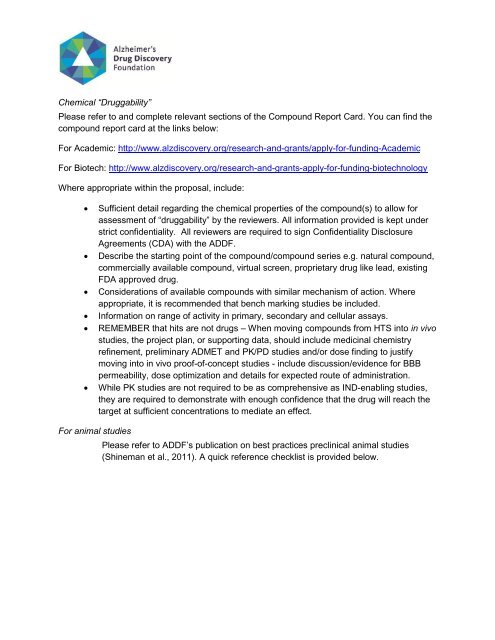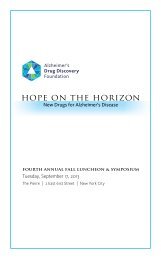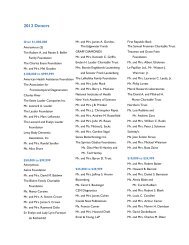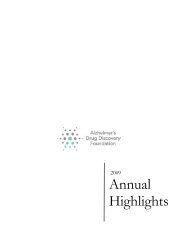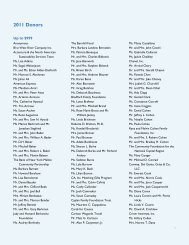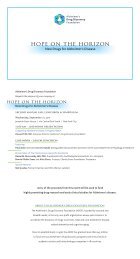application instructions - Alzheimer's Drug Discovery Foundation
application instructions - Alzheimer's Drug Discovery Foundation
application instructions - Alzheimer's Drug Discovery Foundation
Create successful ePaper yourself
Turn your PDF publications into a flip-book with our unique Google optimized e-Paper software.
Chemical “<strong>Drug</strong>gability”<br />
Please refer to and complete relevant sections of the Compound Report Card. You can find the<br />
compound report card at the links below:<br />
For Academic: http://www.alzdiscovery.org/research-and-grants/apply-for-funding-Academic<br />
For Biotech: http://www.alzdiscovery.org/research-and-grants-apply-for-funding-biotechnology<br />
Where appropriate within the proposal, include:<br />
<br />
<br />
<br />
<br />
<br />
<br />
Sufficient detail regarding the chemical properties of the compound(s) to allow for<br />
assessment of “druggability” by the reviewers. All information provided is kept under<br />
strict confidentiality. All reviewers are required to sign Confidentiality Disclosure<br />
Agreements (CDA) with the ADDF.<br />
Describe the starting point of the compound/compound series e.g. natural compound,<br />
commercially available compound, virtual screen, proprietary drug like lead, existing<br />
FDA approved drug.<br />
Considerations of available compounds with similar mechanism of action. Where<br />
appropriate, it is recommended that bench marking studies be included.<br />
Information on range of activity in primary, secondary and cellular assays.<br />
REMEMBER that hits are not drugs – When moving compounds from HTS into in vivo<br />
studies, the project plan, or supporting data, should include medicinal chemistry<br />
refinement, preliminary ADMET and PK/PD studies and/or dose finding to justify<br />
moving into in vivo proof-of-concept studies - include discussion/evidence for BBB<br />
permeability, dose optimization and details for expected route of administration.<br />
While PK studies are not required to be as comprehensive as IND-enabling studies,<br />
they are required to demonstrate with enough confidence that the drug will reach the<br />
target at sufficient concentrations to mediate an effect.<br />
For animal studies<br />
Please refer to ADDF’s publication on best practices preclinical animal studies<br />
(Shineman et al., 2011). A quick reference checklist is provided below.


